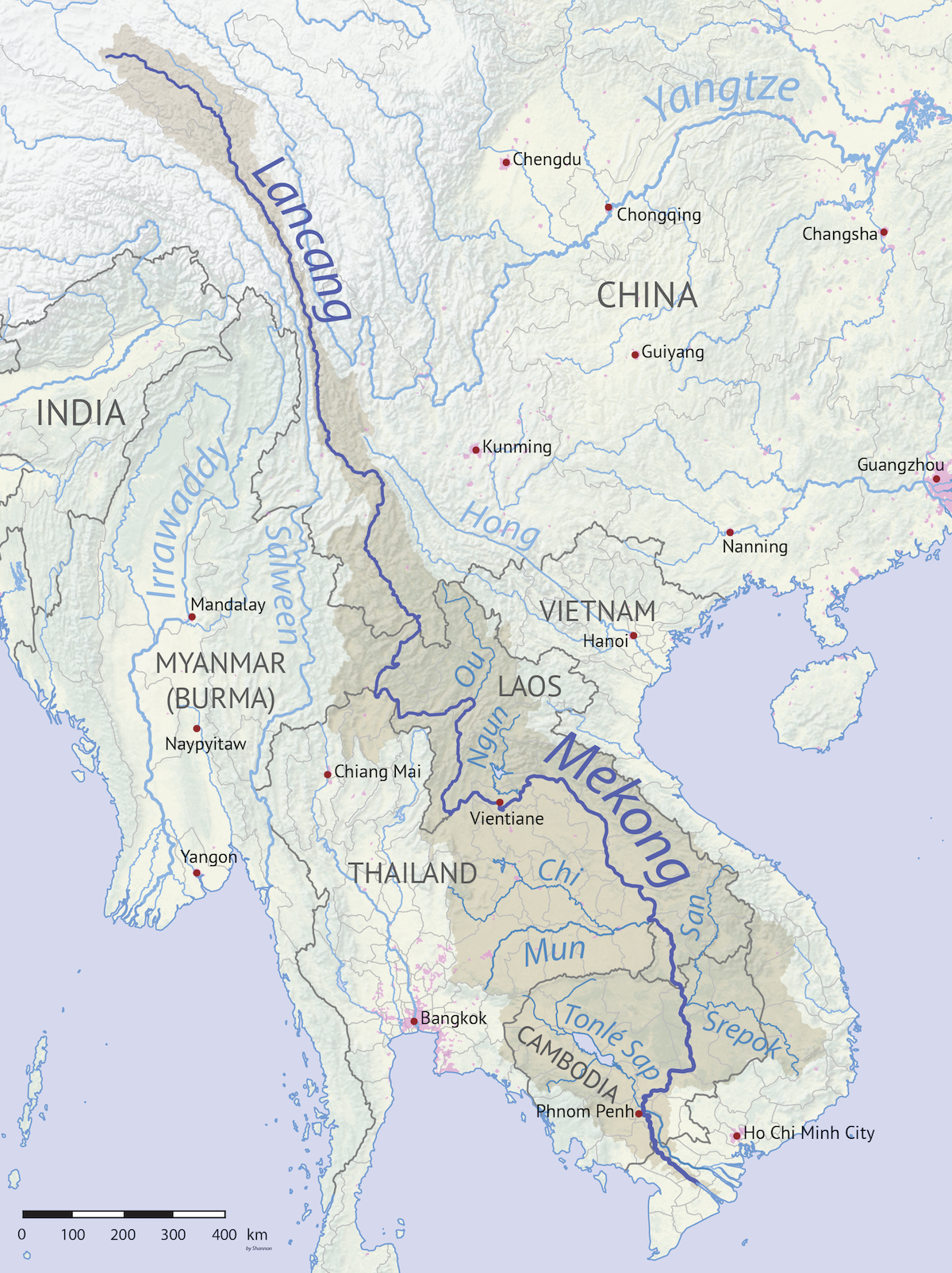

The Asia’s sixth longest river, Mekong, harbors distinct natural landscapes and rich cultural heritages. This transboundary river is originates from the Tibetan Plateau and runs a 4,909-kilometer-long distance through 6 countries; China, Myanmar, Laos, Thailand, Cambodia, and Vietnam, discharging 475 cubic km of water to the South China Sea annually.
The Lancang-Mekong river basin, with a total area of 795,000 square km, is considered one of the most important biodiversity hotspots. According to FishBase, the species richness of fish in Mekong is second only to that in Amazon. Approximately 60 million people rely on Mekong River and its tributaries for fisheries, aquaculture, agriculture, commerce and navigation. Transboundary cooperation in water resource management in the Lancang-Mekong river basin is, therefore, of immense importance in regional water security and sustainable socio-economic development.
The foremost key step to economic sustainability and preservation of Mekong’s biological treasure is quality monitoring. The biological indices, such as the species richness and abundance of selected indicator species (benthic diatom, zooplankton, aquatic invertebrate, and fish), can be used to assess the healthiness of the river ecosystem. However, the traditional methods for biological indicator assessment are based on the direct observation of the organisms, which have been proven to be time- and resource-intensive. In the face of imminent ecological crisis, the solution emerges from the place so small, yet so prevalent ...
Organisms, from unicelllular microbes to multicellular plants and animals, shed their materials into environment all the time. DNA, the essential genetic material of all living cells, is one of the biological materials that accumulate in soil, water, or air. This so-called “environmental DNA” or “eDNA” can be collected and analyzed to find out the species and abundance of its owners. Advances in Next-Generation Sequencing (NGS) and High-Throughput Sequencing (HTS) technologies have allowed the simultaneous identification of many taxa in the same sample via metabarcoding techniques. The eDNA-based method is proved to be a relatively rapid and inexpensive way to characterize whole communities of organisms and assess ecological status of the envionment. Besides, the application of metabarcoding allows the range of bioindicators to be extended to microorganisms including bacteria, freshwater fungi, archaea, and protists, which are known to be highly sensitive to river’s water quality, but had been previously overlooked due to technical infeasibility of the traditional water monitoring methods. Several studies have successfully shown the effective use of microbial assemblage composition as biological indicators of the aquatic systems. Additionally, the integrative assessment including both microorganisms and macroorganisms will enable us to capture the bigger and deeper picture of our river ecosystem.
